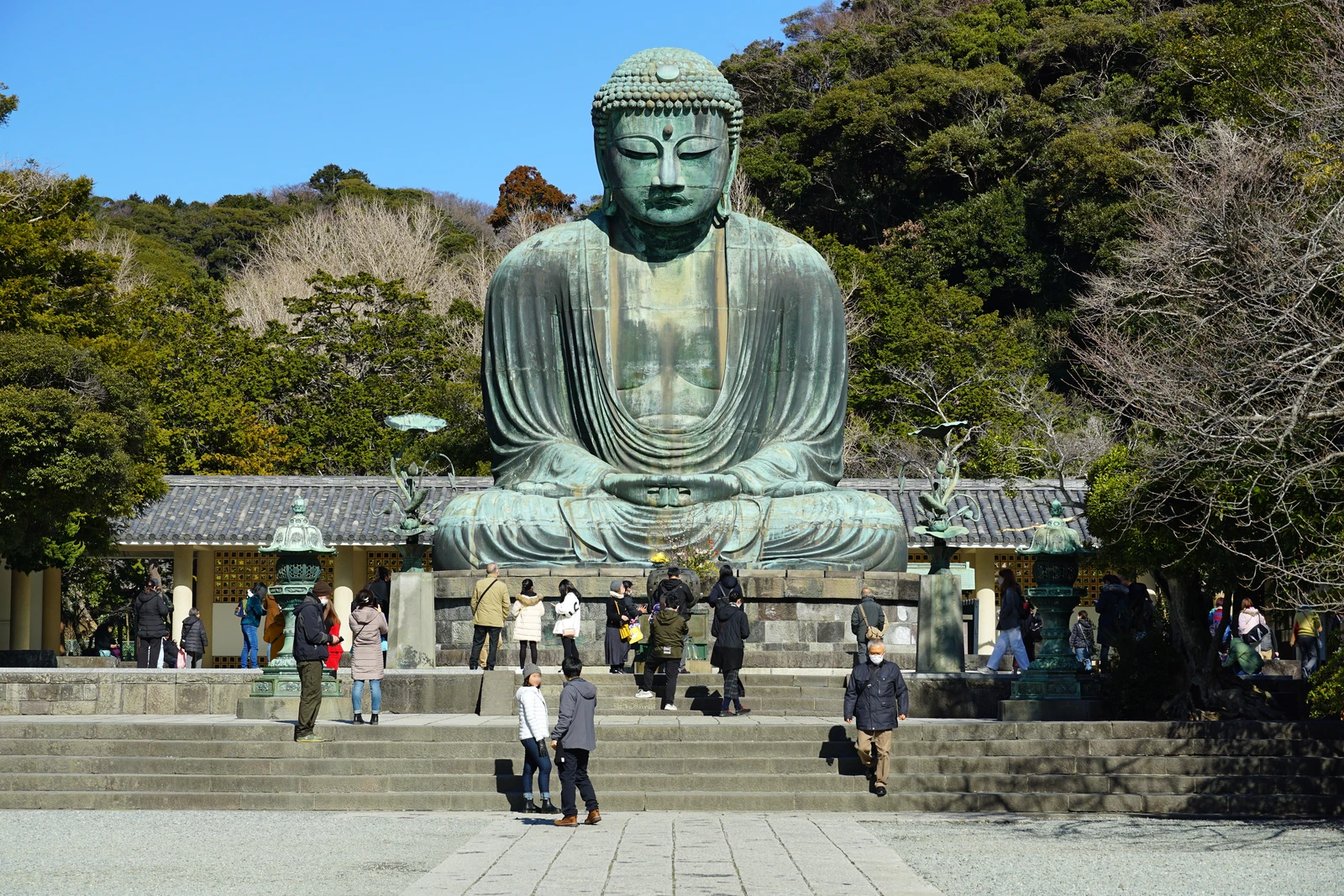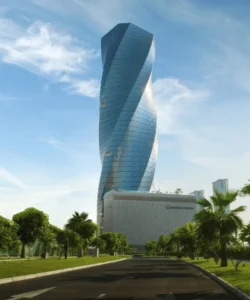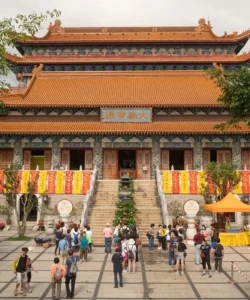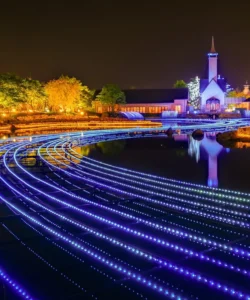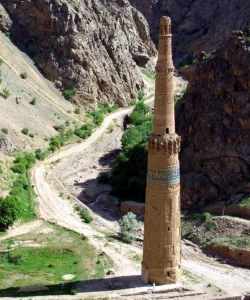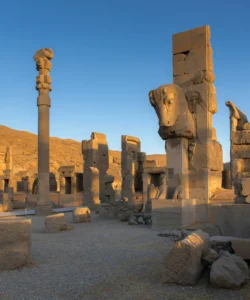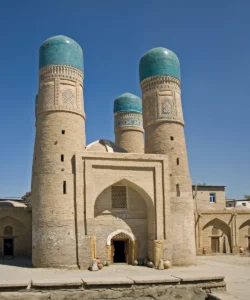The Kamakura Daibutsu, or Great Buddha of Kamakura, is a monumental outdoor bronze statue of Amida Buddha located within the grounds of Kōtoku-in Temple. It’s a truly awe-inspiring sight and a must-visit for anyone traveling to the historic city of Kamakura.
![]()
Name: Kamakura Daibutsu (Great Buddha of Kamakura)
Address: 4-chōme-2-28 Hase, Kamakura, Kanagawa 248-0016, Japan (Kōtoku-in Temple)
How to get there:
The Kamakura Daibutsu is easily accessible, making it a popular day trip from Tokyo:
- From Tokyo to Kamakura Station:
- JR Yokosuka Line: Direct from Tokyo Station to Kamakura Station (approx. 1 hour, 950 yen).
- JR Shonan Shinjuku Line: Direct from Shinjuku Station to Kamakura Station (approx. 1 hour, 950 yen). Look for trains bound for Zushi.
- Odakyu Railway (Enoshima-Kamakura Free Pass): A more economical option if you plan to visit Enoshima as well. Take the Odakyu Line from Shinjuku to Fujisawa, then transfer to the Enoshima Electric Railway (Enoden) to Kamakura. The Enoshima-Kamakura Free Pass (1640 yen) covers the round trip and unlimited Enoden use.
- From Kamakura Station to Hase Station (near Daibutsu):
- Enoshima Electric Railway (Enoden): Take the Enoden line bound for Fujisawa from Kamakura Station to Hase Station (approx. 7 minutes). The Great Buddha is about a 7-minute walk from Hase Station, and it’s well-signposted.
- By Bus: Take an Enoshima-dentetsu Bus (Bus Terminal No. 1) or Keikyu Bus (Bus Terminal No. 6) from the East Exit of Kamakura Station and get off at the “Daibutsu-mae” bus stop (approx. 10 minutes).
- On Foot from Kamakura Station: It’s also possible to walk from Kamakura Station to the Daibutsu, which takes about 30 minutes, offering a pleasant stroll through the city.
About the Wonder and Architecture:
The Kamakura Daibutsu is a bronze statue of Amida Buddha, notable for its serene expression and monumental size.
- Dimensions: It stands at approximately 13.35 meters (43.8 feet) tall, including its pedestal, and weighs about 121 tons. Its face alone is 2.35 meters long, with eyes one meter wide and ears 1.90 meters long.
- History: The statue was cast in 1252, replacing an earlier wooden Buddha. Originally, it was housed inside a large temple hall. However, this hall was repeatedly destroyed by typhoons and a tsunami in the 14th and 15th centuries. Since a devastating tsunami in 1498, the Daibutsu has stood in the open air, braving the elements.
- Construction: The statue was cast in several layers of bronze, a complex process for its time. You can even enter the hollow interior of the statue for a small fee, where you can observe the internal structure and the layering of the bronze plates. This unique feature allows visitors a rare glimpse into the ancient casting techniques.
- Artistic Style: The Kamakura Daibutsu is considered a classic example of the Buddhist sculptural style of the Kamakura period, characterized by a sense of realism and powerful, yet peaceful, presence. Traces of the original gold leaf that once covered the entire statue can still be faintly seen, particularly around the ears.
What makes it famous:
The Kamakura Daibutsu is famous for several reasons:
- Its Majestic Outdoor Presence: Unlike many large Buddha statues in Japan that are housed indoors, the Kamakura Daibutsu stands majestically in the open air, allowing visitors to appreciate it against the backdrop of nature and changing seasons (e.g., cherry blossoms in spring, autumn foliage).
- Historical Significance: It has survived centuries of natural disasters, including earthquakes and tsunamis, making it a testament to the resilience of both the statue and Japanese craftsmanship.
- Iconic Symbol of Kamakura: It is undoubtedly the most recognizable symbol of Kamakura and a key attraction for both domestic and international tourists.
- Accessibility: Its relatively easy accessibility from Tokyo makes it a popular and convenient historical site to visit.
- Ability to Enter the Statue: The unique experience of being able to go inside the hollow statue draws many curious visitors.
How it compares to some other similar attractions:
While the Kamakura Daibutsu is one of Japan’s most famous giant Buddha statues, it has distinct characteristics when compared to others:
- Nara Daibutsu (Todai-ji Temple):
- Size: At 15 meters (49 feet) tall, the Nara Daibutsu is taller than the Kamakura Daibutsu and is the largest bronze Buddha statue in Japan.
- Location: The Nara Daibutsu is housed inside the Daibutsuden (Great Buddha Hall) at Todai-ji Temple, which is the world’s largest wooden building. This provides a different viewing experience, as you see the statue within a grand architectural setting.
- History: While both have undergone repairs due to damage, the Nara Daibutsu has been recast multiple times over its longer history (original construction in 752 CE), whereas the Kamakura Daibutsu largely retains its original form.
- Ushiku Daibutsu (Ibaraki Prefecture):
- Size: Ushiku Daibutsu is by far the tallest Buddha statue in Japan and one of the tallest in the world, standing at 120 meters (394 feet) including its base. It’s equivalent to a 38-story building.
- Modernity: It was completed in 1993, making it a much more modern construction compared to the ancient Kamakura and Nara Buddhas. It also features an interior museum and observation decks.
- Other Daibutsu Statues: Japan has many other giant Buddha statues, both ancient and modern, including the Takaoka Daibutsu and the Showa Daibutsu in Aomori (21.35 meters). Each has its unique history, artistic style, and setting, but the Kamakura Daibutsu’s outdoor placement and historical significance make it particularly distinctive and beloved.
